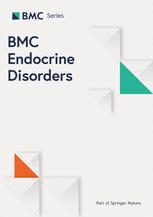Prevalence of prediabetes and associated factors in southwest iran: results from Hoveyzeh cohort study
Authors
Affiliations
Abstract
Background: Increasing trend of prediabetes and diabetes is a global public health issue. On the other hand, prediabetes can increase the risk of developing some non-communicable diseases, including type 2 diabetes, cardiovascular disease, hypertension, fatty liver disease, etc. Given that there are modifiable various risk factors for prediabetes, this cross-sectional study aimed to evaluate the prevalence of prediabetes and its risk factors among adults.
Methods: The present study included the baseline data from the Prospective Epidemiological Research Studies of the Iranian Adult and Neonates (PERSIAN), Hoveyzeh Cohort Study (N = 10,009). The demographic data, lifestyle habits, anthropometric data, and clinical and biochemical parameters were gathered. The odds ratio of prediabetes was assessed by logistic regression.
Results: The final analysis was conducted on 7629 participants. The prevalence of overweight (36.7%), obesity (37.5%), prediabetes (30.29%), abnormal high density lipoprotein (35.4%), cholesterol (33.8%) and triglyceride (39.7%), and HTN (21.3%) were common. In the adjusted analysis, there were higher odds of having prediabetes for overweight (OR = 1.9, 95% CI: (1.19, 3.03), p = 0.007), obesity (OR = 3.18, 95% CI: (1.99, 5.07), p < 0.001), waist circumstance (WC) (OR = 1.024, 95% CI: (1.002, 1.03), p < 0.001), hip circumstance (HC) (OR = 1.01, 95% CI: (1.003, 1.02), p = 0.008), older age (OR = 1.04, 95% CI: (1.04, 1.05), p < 0.001), hypertension (OR = 1.38, 95% CI: (1.21, 1.57), p < 0.001),), glutamic-pyruvic transaminase (OR = 1.013, 95% CI: (1.007, 1.019), p = 0.001), glutamic-oxaloacetic transaminase (OR = 1.01, 95% CI: (1.006, 1.013), p < 0.001), triglyceride = 150-199 mg/dl (OR = 1.32, 95% CI: (1.16, 1.51), p < 0.001), triglyceride ≥ 200 mg/dl (OR = 1.64 (95% CI: 1.44, 1.86), p < 0.001), cholesterol = 200- 239 mg/dl (OR = 1.33, 95% CI: (1.18, 1.49), p < 0.001), and cholesterol ≥ 240 mg/dl (OR = 2.04, 95% CI: (1.72, 2.42), p < 0.001) in general population. Conclusion: The prevalence of prediabetes, overweight, obesity, HTN, and dyslipidemia was common. The greater chances of prediabetes were related to aging, overweight, obesity, HTN, higher liver enzymes, HC, abnormal WC, and dyslipidemia. It seems that practical interventions are necessary to prevent prediabetes.
Keywords: Hoveyzeh; Hypertension; Lifestyle; Lipid profiles; PERSIAN Cohort; Prediabetes; Prevalence; Risk factors.

